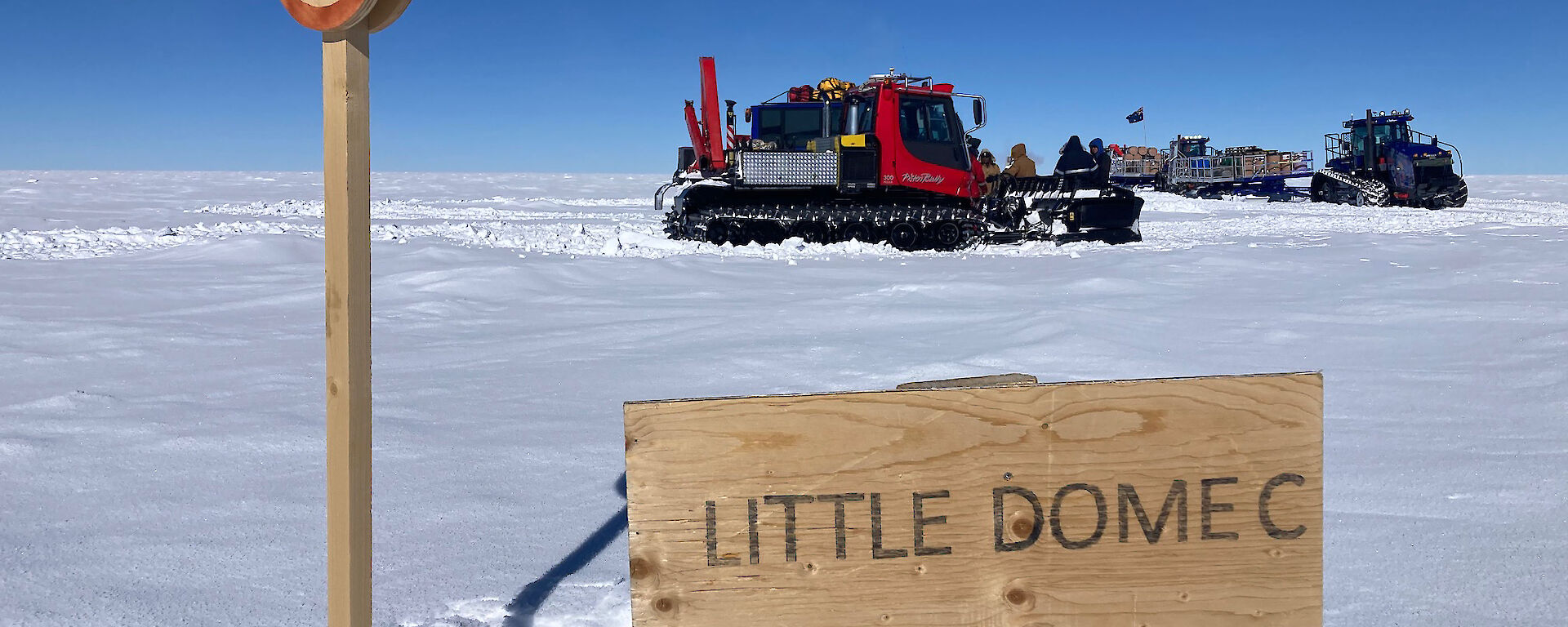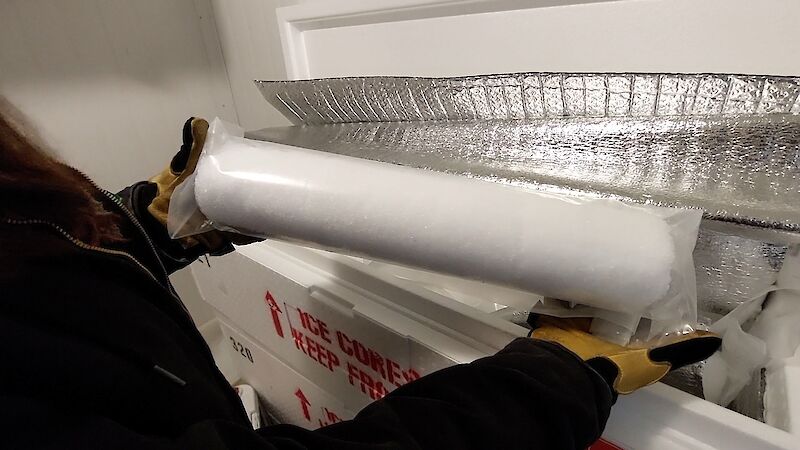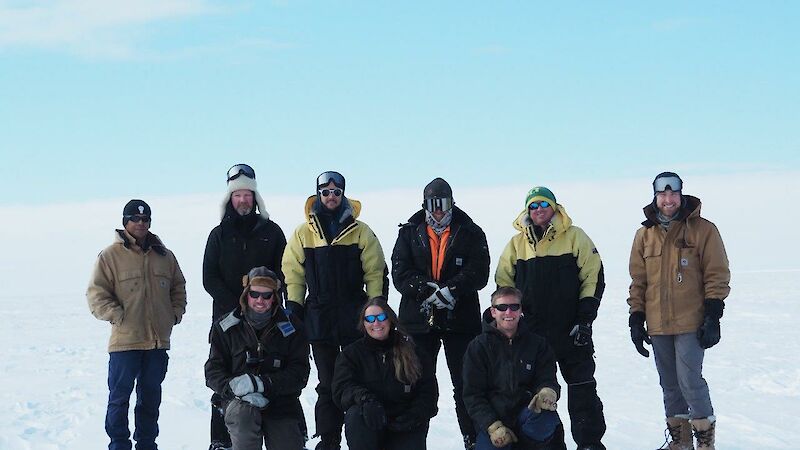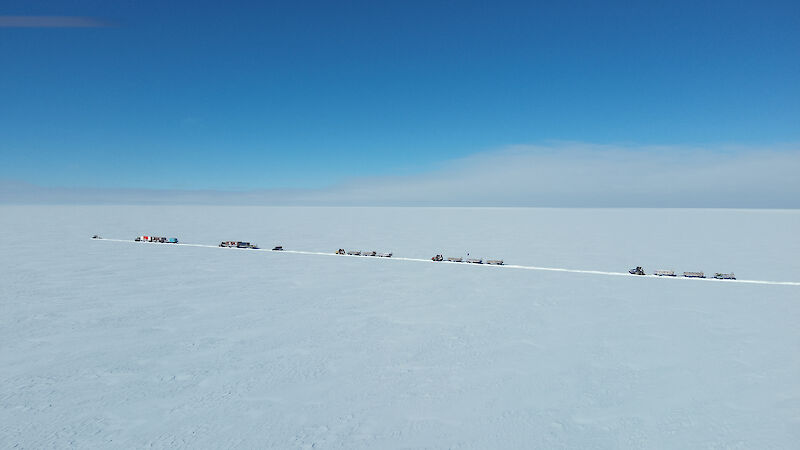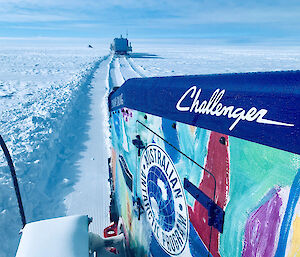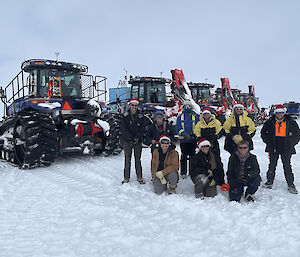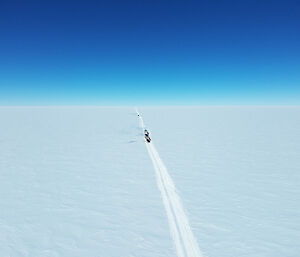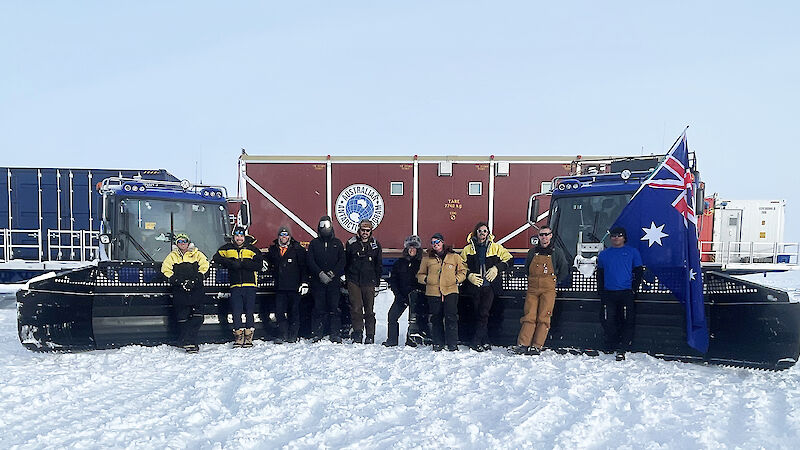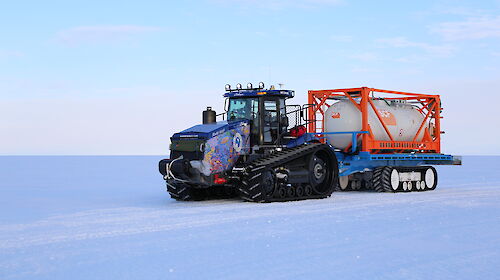Moving in a convoy of five modified tractor trains pulling a mobile station on sleds, they racked up more than 2,300 km traversing across previously untravelled icy terrain.
Blizzards, temperatures to −44°C and hardened snow dunes known as sastrugi, were just a few of the challenges that stood in the team’s way and put the tractor trains and traverse capabilities to the test.
Little Dome C is the site of the Million Year Ice Core – a remote summit which holds some of the world’s oldest ice.
This project is one of the most important Antarctic science quests ever undertaken by Australia and will provide new information to test climate models and resolve long-standing questions about the timing of ice ages.
This summer the team successfully proved a safe path to the site while testing tractors and traverse machinery all required to transport people and equipment.
Scientists collected the first ‘shallow’ ice cores – ice from the surface down several metres that holds important initial information on snow chemistry.
These cores will be flown back to Australia later this month, increasing our knowledge on the best way to safely transport the precious cold cargo.

